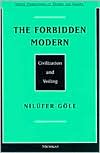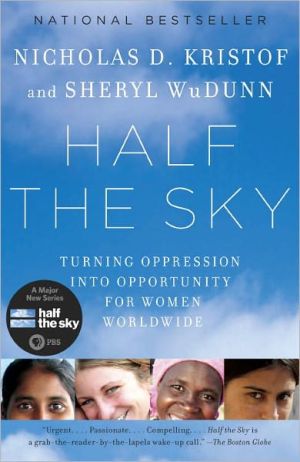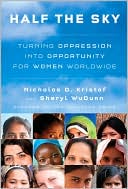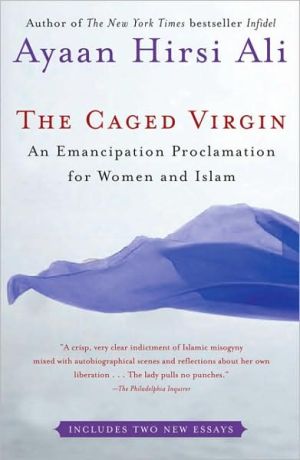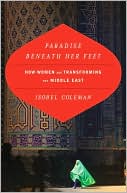The Forbidden Modern: Civilization and Veiling
This book by prominent Turkish scholar Nilüfer Göle examines the complex relationships among modernity, religion, and gender relations in the Middle East. Her focus is on the factors that influence young women pursuing university educations in Turkey to adopt seemingly fundamentalist Islamist traditions, such as veiling, and the complex web of meanings attributed to these gender-separating practices. Veiling, a politicized practice that conceptually forces people to choose between the...
Search in google:
A prominent Turkish sociologist examines the veiling of young university women, and the cultural cleavages between the Islamic and Western worlds
The Forbidden Modern\ Civilization and Veiling \ \ By Nilüfer Göle \ The University of Michigan Press\ Copyright © 1996 University of Michigan\ All right reserved.\ ISBN: 978-0-472-06630-8 \ \ \ \ Chapter One\ Introduction: The Forbidden Modern \ Veiling-that is, the wearing of a head covering and long, loose-fitting gowns-refers to the political reappropriation of Islamic religiosity and way of life rather than its trivialization within established tradition. Veiling is the most salient emblem and women the newest actors of contemporary Islamism. No other symbol than the veil reconstructs with such force the "otherness" of Islam to the West. Women's bodies and sexuality reappear as a political site of difference and resistance to the homogenizing and egalitarian forces of Western modernity. The contemporary veiling of Muslim women underscores the insurmountability of boundaries between Islamic and Western civilization. In other words, women's covered bodies reveal the centrality of the gender question and sexuality in Islamist critiques of Western modernity. Islamism brings forth women as markers of modesty and morality. By the same token women's participation and politicization engenders the formation of a public and collective identity for women that distances itself from definitions of separate gender roles within the domestic sphere. Hence, as a contemporary emblem for the Islamicization ofa way of life and the politicization of religion, Islamic veiling cross-cuts power relations between Islam and the West, modernity and tradition, secularism and religion, as well as between men and women and women themselves.\ This book explores the significance of the veiling movement in Turkey through a multilayered analysis of power relations ranging from the most private gender relations to the conflictual encounter between civilizations. Women's veiling is pursued as an analytic thread, one that interweaves the power relations concealed by the "civilizing process" between "East and West," one that knits the fabric of Islamism and illuminates the patterns of Western modernity through the prism of Islamism. Therefore, this is a study of the "embeddedness of gender" in the elaboration of Islamism on the one hand and modernism on the other. I argue that contemporary Islamism cannot be adequately understood in isolation from the local constructs of Western modernity in which women have an edificatory role.\ This introductory chapter is a reassessment of the tensions between the theoretical and methodological trajectories of the book. The research project originated from an observable event-namely, the Islamist veiling movement of university students in Turkey during the post-1983 period. The issue of veiling became a decisive force in the radicalization of the Islamist movement once female students wearing headscarves were banned from universities, causing veiled students to mobilize, organizing sit-ins and demonstrations. Veiling can thus be considered as a social movement in that Muslim female students articulate their claims collectively and publicly and define the objectives of their action autonomously. The veiling movement has become a source of political conflict and polarization between secularists and Islamists, one that has engaged intellectuals, university faculty, mass media, and political parties in a fierce debate. But, foremost, this debate has revealed the deep social and cultural cleavages between secularists and Islamists in general and among women in particular. In a way it has revealed the extent to which "Westernist" versus "Islamist" confrontations have been reproduced among the citizens of the same nation, religion, and gender. This study also stems from the "personal uneasiness" of the author, both as a Turkish intellectual and woman. First, the most cherished master-narrative in Turkey relating education and modernization to woman's emancipation is contested by educated Islamist women. The premise that traditions and religion disappear with the advent of modernity, an evolutionary progression that is often taken as a natural consequence of secular scientific education, no longer holds. Second, as a product of Turkish secular modernism, I am puzzled by the advent of this new Islamic figure of women sharing the same classes, educations, and professions but asserting at the same time their aspirations for an Islamic ideal and identity; the commonality or communicability between these two figures of women, of the same religion, nationality and gender, thus becomes one of the questions underlying this study. Hence, I will attempt to establish a link between "private uneasiness" and "public issue," between "biography" and "history," thereby trying to translate my own experience into Mill's term, through a "sociological imagination."\ The first section of this chapter describes the sociological significance of the political debate about Islamist veiling. The second section discusses the methodological difficulties stemming from the shift in master-narratives to a focus on agency and meaning within a highly polarized and politicized context. These difficulties are not limited in time and space to the conditions of the research; instead, they lead to the more general question of the location of the researcher, to the connection between intellectuals and knowledge, culminating in the age-old social science problem of the connection between analysis and engagement, between structure and agency. The third section reviews the Turkish mode of modernization (initiated by the Ottoman-Turkish elites during the nineteenth century and resulting in the foundation of a secular nation-state by Mustafa Kemal Ataturk in 1923) in order to grasp from a historical perspective the contemporary dispute between Islamists and modernists. It reexamines the transformative impact of modernization on the private and public spheres, on the relations between men and women, and on the self-definition of Turks. It problematizes the cherished concept of "universal civilization" held by Turkish reformist elites, which came to be synonymous with Western European culture. The fourth section argues for the need to locate and study women as the symbols and central agents of this "civilizing project." The fifth section discusses the significance of Islamist movements, and more particularly that of Islamist veiling, in terms of the intrigue and resistance it offers to the civilizing project. It depicts the ways in which the Islamist identity, constructed in gendered terms, can not be separated from the perceptions and constructions of Western modernity. The sixth section studies Islamism's implicit critique of secular ways of life, one that results in women's corporal and public invisibility. Finally, the last section examines the conflicting agendas Islamist women acquire through participating in secular education and religious politics, on the one hand, and adhering to the principles of Islamist communalism, on the other. While the former necessitates public participation, the latter sanctions the individuation of women, whose morality specifically involves community and Islamist authenticity.\ Sociological Significance of Veiling\ Islamic veiling is a political issue in both Muslim and Western European countries: it highlights the tension within the core values of society, ranging from secularism of the public space, the place of religion in education, and individual rights to multiculturalism and multiconfessionalism. The veiling of Islamist students appears as a controversial issue because it is the most visible reminder of religiosity and traditional roles of women in modern social contexts, such as university campuses, urban centers, political organizations, and industrial workplaces. This veiling is commonly perceived as a force of "obscurantism" and is often identified with women's subservience; as such, it is interpreted as blurring the clear-cut oppositions between religion and modernity and as an affront to contemporary notions of "gender emancipation" and "universal progress." Hence, the revival of Islamist movements throughout the Muslim world is often interpreted as a challenge to Western modernity, which is built upon a unidirectional notion of evolutionary progress conceived in terms of binary oppositions between religion and secularism, the private and public spheres, and particularism and universalism. Also Islamist veiling embodies the battleground for the two competing conceptions of self and society, Western and Islamist. Metaphorically, women's covered bodies revitalize contemporary Islamist movements and differentiate them from the secularist project.\ I therefore argue here not only that the question of veiling is not an auxiliary issue for Islamist movements but, on the contrary, highlights the centrality of the gender issue to Islamist self-definition and implied Western criticism. Hence, veiling is a discursive symbol that is instrumental in conveying political meanings. Accordingly, the significance of contemporary Islamist movements can only be understood, I believe, in terms of their problematic relation to Western modernity, a relation that takes shape and acquires sense through women's bodies and women's voices. Islamism, therefore, is shaped by a selective reconstruction of identity rather than by an unchanging-that is, a historical and context-free, or fixed-identity. Consequently, it can be said that the questions of women, modesty, and sexuality are discerned and problematized by the contemporary Islamist movements more as a result of critical dependence on modernity rather than of loyalty to Islamic religion.\ In its contemporary form veiling conveys a political statement of Islamism in general and an affirmation of Muslim women's identity in particular. In this respect it is distinct from the traditional Muslim woman's use of the headscarf. While the latter is confined within the boundaries of traditions, handed down from generation to generation and passively adopted by women, the former is an active reappropriation by women that shifts from traditional to modern realms of life and conveys a political statement. Veiling is a political satement of women, an active reappropriation on their behalf of Islamic religiosity and way of life rather than its reproduction by established traditions. In this respect veiling does not express passive submission to prevalent community norms but, instead, affirms an active interest in Islamic scripture. Educated lower- and middle-class women claim to know the "true" Islam and hence differentiate themselves from traditional uneducated women; these young Islamist women reject foremost the model provided by their mothers, who are perpetuating traditions and traditional religion within their domestic lives without any claim to knowledge and praxis. Paradoxically, the veiled students, who owe their newly acquired class status and social recognition to their access to secular education, also empower themselves through their claim on Islamic knowledge and politics. Veiled students, as new female actors of Islamism, acquire and aspire for "symbolic capital" of two different sources: religious and secular. Their recently acquired visibility, both on university campuses and within Islamist movements, indicates women's appropriation of this new symbolic capital and the emergence of a new figure, the female Islamist intellectual.\ Furthermore, women's participation in Islamist movements symbolizes a new sense of belonging and ushers in a new community of believers. If the traditional way of covering oneself changes from one Muslim country to another in terms of the form of "folk" dresses, the contemporary Islamist outfit is similar in all Muslim countries: it is through the symbolism of women's veiling that a commonality of identity and the Muslim community (umma) is reconstructed and reinvented at the transnational level.\ In sum, the veiling of women is not a smooth, gradual, continuous process growing out of tradition. On the contrary, it is the outcome of a new interpretation of Islamic religion by the recently urbanized and educated social groups who have broken away from traditional popular interpretations and practices and politicized religion as an assertion of their collective identity against modernity. The veiling of women is the most salient trait of the contemporary Islamist movement, which is grounded on this focal tension among Islamism, traditionalism, and modernism.\ The difference between the two profiles of Muslim women and the new significance of veiling were sharply underlined by the "headscarf dispute," which erupted in 1984 in Turkey. The use of the traditional headscarf by lower-middle-class women living on the fringes of modern city life has gone almost unnoticed, considered as a residual practice of traditionalism, while the adoption of the Islamist outfit by a group of university students, a phenomenon of the post-1983 period, is considered as a manipulative tool of the rising Islamist fundamentalist movement and, consequently, has provoked a very polarized political dispute between secularists and Islamists.\ To distinguish the Islamist from the traditional way of covering, the Turkish mass media labeled the new veiling of women as the "turban movement." The word turban, coined for the new veiling movement, is polysemic and hints at the transgressive nature of women's participation in Islamist movements. Turban, originally from Turkish tül(i)bend and Persian dülband, refers to a headdress of Muslim origin, consisting of a long linen, cotton, or silk scarf. In modern Turkish, however, it is employed as a French word, one denoting a fashion of headdress, itself adopted from Ottoman Turkish. As such, the word turban itself has witnessed the transmission, interplay, and interpenetration of words and practices between the Ottoman Turkish heritage and the West. Labeling the female Muslim students' movement of veiling as the "turban movement" differentiates it from use of the traditional headscarf and suggests fashion and a change-that is, a modern way of appropriation as opposed to simply perpetuating tradition. On the other hand, turban also means a religious garment used by men-that is, sarik in Turkish-and, though it recalls the power of Islamic ulema (religious classes), it is used to distinguish women's religious politicization and empowerment. Hence, the label "turban" itself reveals the hybrid and transgressive character of the Islamist veiling movement grounded on the power dynamics between East and West, traditionalism and modernity, men and women. Contrary to the traditional practice of Islamic veiling, or the Islamic headscarf, which conveys a specific meaning-that is-"return to traditions," "return to fundamentalism," "subservience of women"-and suggests binary oppositions such as "Islam is essentially different from the West," and "Westernization is a condition of women's emancipation," the label of "turban" represents the hybrid and transgressive nature of Islamism in general and women's participation in the Islamist movement in particular.\ Agency, Conflictuality, and Self-Reflexivity\ Theories of modernization have forced us to seek, and find, symmetrical and linear lines of development that occur almost independently of historical and geographical context. Today the epistemological pendulum is swinging from evolutionary reasoning and methodological positivism to the question of agency and the subsequent analysis of particularistic, context-bound interpretations of modernity and self. Such a shift has an undeniably liberating potential on the study of "non-Western" countries. The distancing from the universalistic master-narratives of modernization and emancipation opens up the space for the examination of subjective constructions of meanings, cultural identities, and social conflicts; in short, it enables the examination of the specific articulations between modernity and the local fabric.\ (Continues...)\ \ \ \ \ Excerpted from The Forbidden Modern by Nilüfer Göle Copyright © 1996 by University of Michigan . Excerpted by permission.\ All rights reserved. No part of this excerpt may be reproduced or reprinted without permission in writing from the publisher.\ Excerpts are provided by Dial-A-Book Inc. solely for the personal use of visitors to this web site. \ \
1Introduction12Woman: The Touchstone of Westernization273Kemalism: The Civilizing Mission574Veiling: The Symbol of Islamization835Conclusion131Notes141Bibliography161Index169
